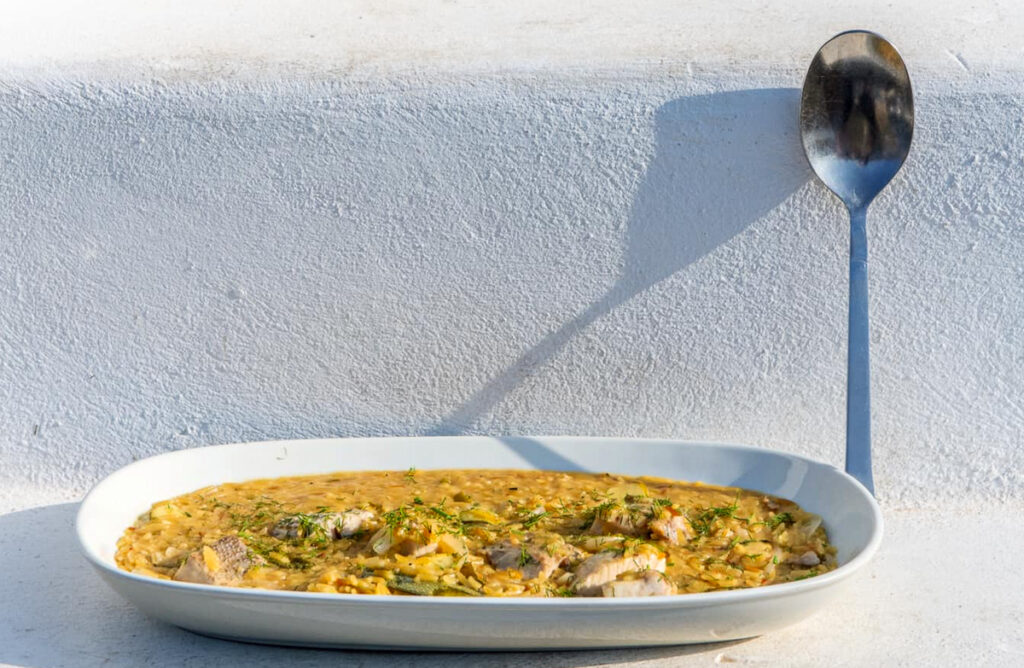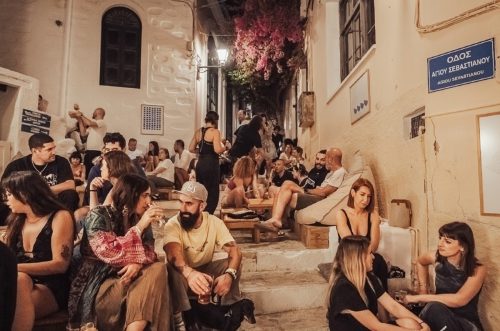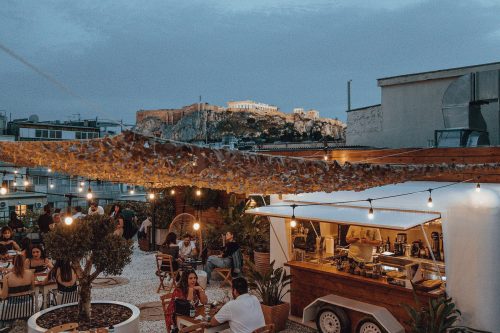Discover the beauty of Tinos, through its rich gastronomy and unspoilt villages, with our detailed foodie guide for this authentic Cycladic island.
While planning a trip to Tinos, I was repeatedly informed that the beauty of this island was in its villages, and its food. After spending days exploring this island inhabited by around 10,000 residents, over 700 churches and 50 active villages, I can agree that not only is the beauty of Tinos in its food and its villages, but also in the road getting there. Tinos’ sprawling landscape varies from lush vineyards, jaw-dropping boulder land and agricultural terracing that dates as far back as the Bronze Age. The roads are spotted with churches, original pigeon houses and more than a few adventurous goats…and they lead to some unique villages and memorable food experiences.
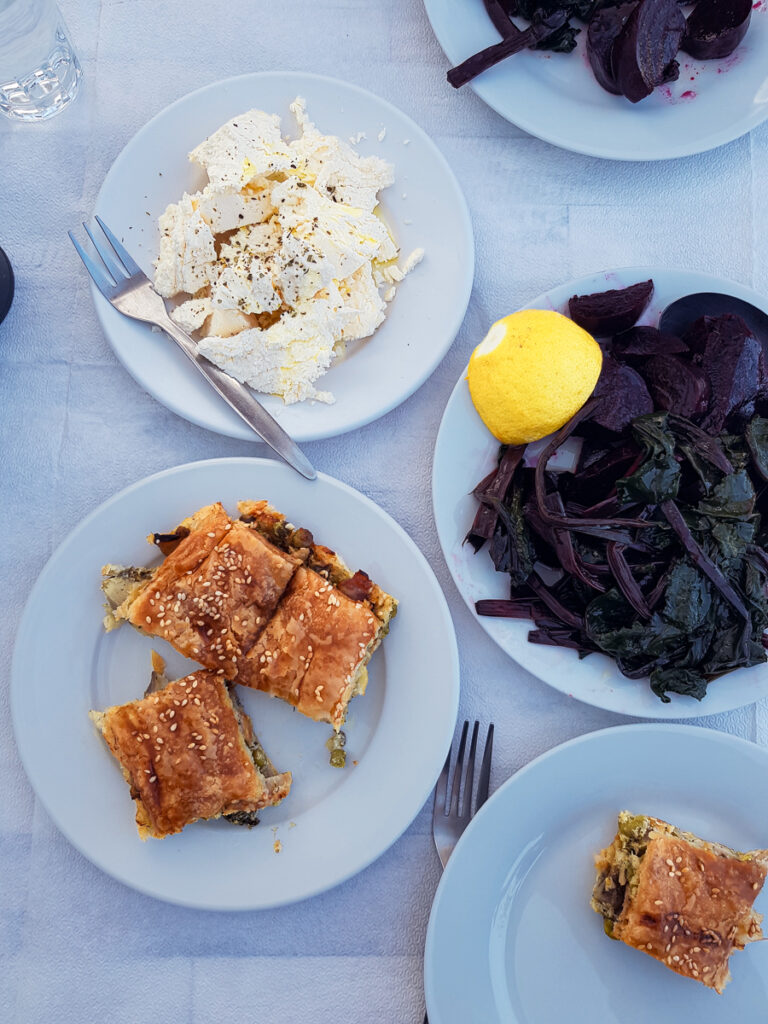
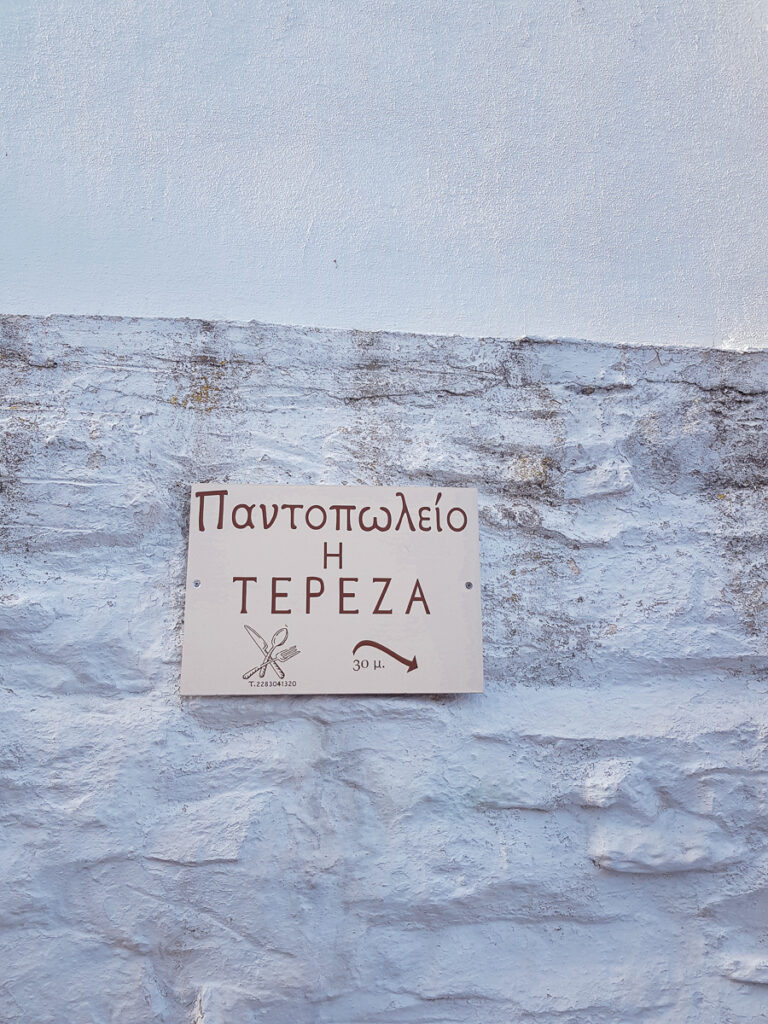
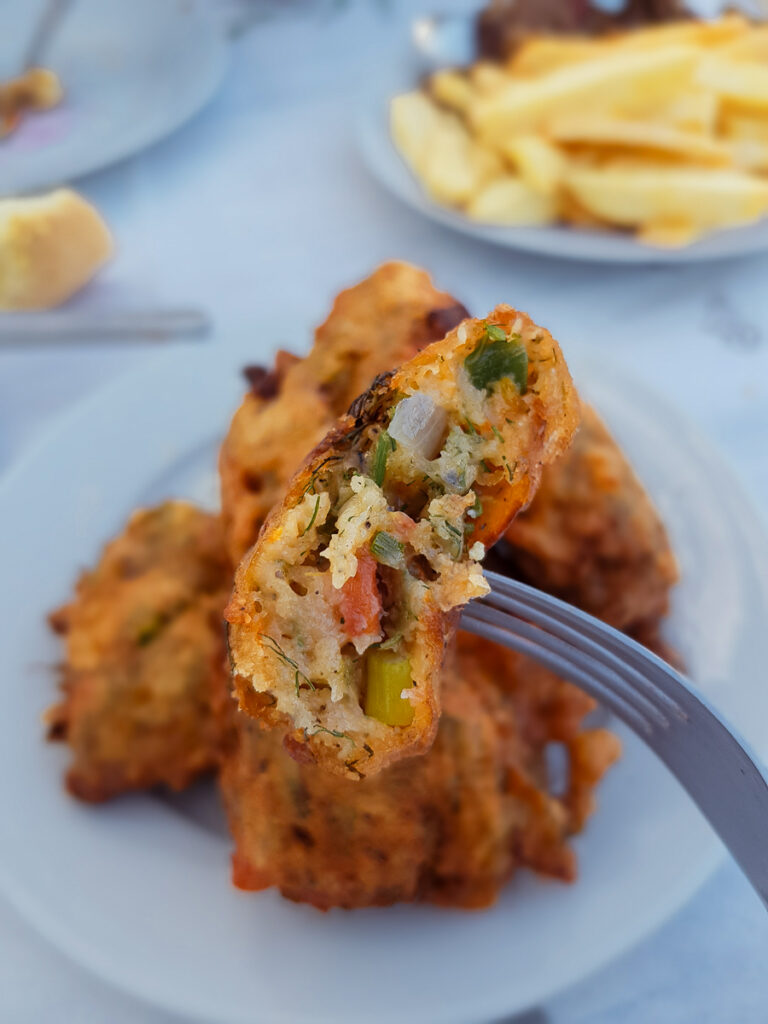
No-frills mezedes at Myrsini
Myrsini is a small, picturesque village on the road to Livada (a visit to Livada beach is a must, as its boulder-clad landscape is surreal). Situated at the foot of Tsiknias mountain (where, according to legend, Aeolus lived) Myrsini is said to have been founded during the Byzantine era. After passing the traditional pigeon houses at the entrance of the village, wander through the quiet alleys until you hear the faint sound of chatter around a corner. The sign for Pantopoleio Tereza will point you in the right direction until you happen upon a small patio with a few tables facing a small flower garden. The pantopoleio (a traditional store that sells just about everything) has been in Myrsini since 1985, and still sells a range of necessities, from laundry detergent to pasta. Its small kitchen was originally built to make a few simple mezedes often served to locals with their coffee. Today, Tereza’s small kitchen serves up some big flavours and is fast becoming a favourite among food lovers. Sample local specialties like kopanisti (a soft, peppery local cheese) and marathokeftedes that are golden and crispy on the outside and filled with fragrant fennel batter on the inside. Tereza also makes fresh pies daily, including pies from artichokes which are a local gourmet product of Tinos and a must-try on the island.
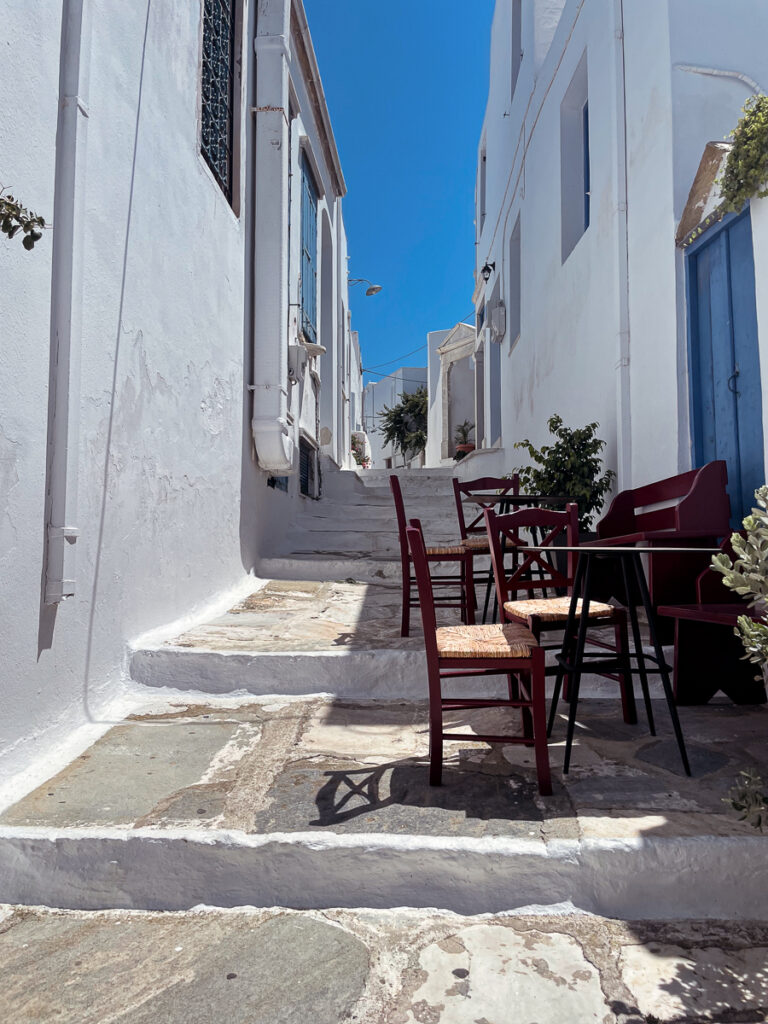
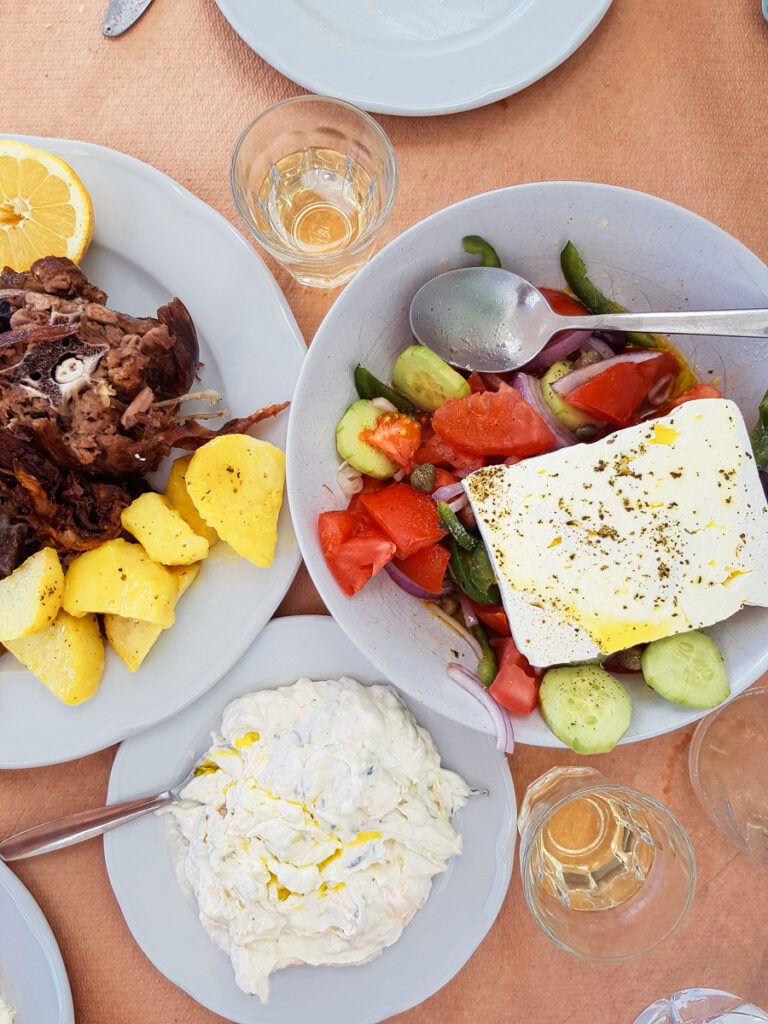
Portokalopita at Pyrgos
One of the island’s largest villages, Pyrgos is a beautiful village known for its marble. Aside from the marble that is featured all over the village, there is the Museum of Marble Crafts which showcases marble extraction and sculpture techniques. Yannoulis Chalepas, the most distinguished sculptor of modern Greece, was born and raised on Tinos island, and his family home at the entrance to Pyrgos is now an impressive museum. Pyrgos’ alleyways are filled with small boutiques selling designer clothing, unique gifts and jewellery (be sure to stop in at Jove Jewellery + Art, which showcases handmade jewellery and homewares made by independent Greek designers). The centrepiece of Pyrgos is undoubtedly the central square which is set around an impressive platanos (plane) tree that provides ample shade for the cafes and eateries placed strategically around it. The kafenion aptly named O Platanos is worth taking a seat at for a serving of their homemade portokalopita (orange pie) which is made using a family recipe passed down through generations. This orange pie is sweet, flakey, best served with a scoop of homemade vanilla ice cream and it’s unlike any other orange pie you’ve ever tasted.
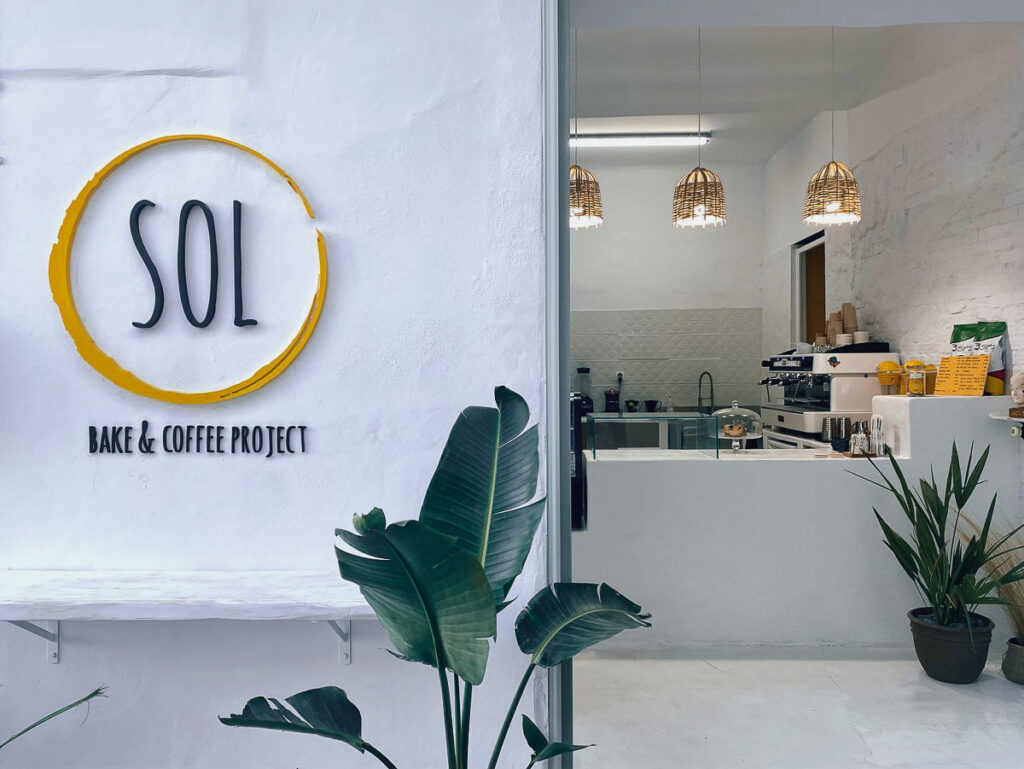
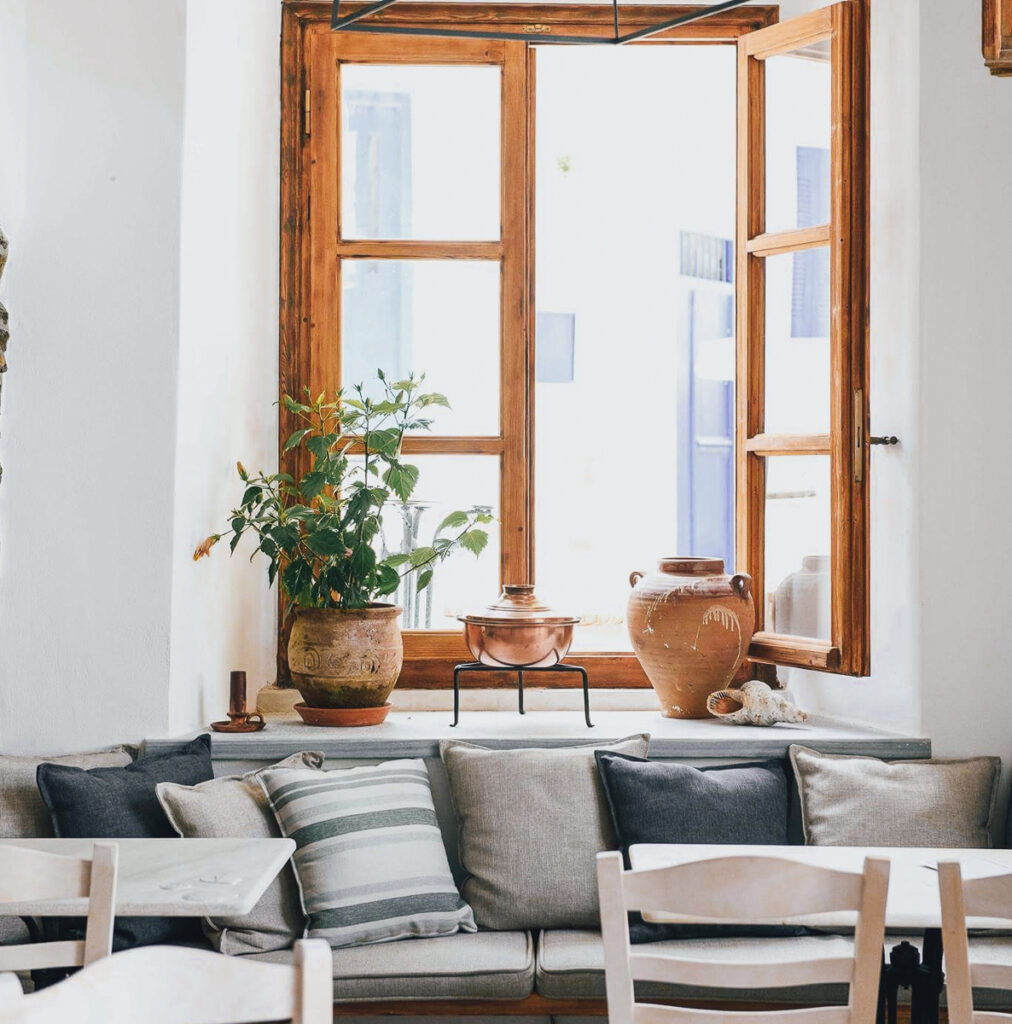
The real deal: authentic taverna fare at Aetofolia
Translating to “Eagle’s Nest”, the village of Aetofolia really does resemble a nest built high in the mountains. Surrounded by mountainous landscape, with a view down to Kato Meri, this village became a settlement for ceramic artists and has its own Museum of Traditional Pottery and Folk Art. Aetofolia has a special feeling of serenity that comes with places that are a little off the beaten track. Kounaria was established in 2013 and is an unassuming family-run taverna that offers up authentic, local Tinian cuisine, made by Josephina and served up by her lovely, hospitable family. Lunch at Kounaria must include a xoriatiki with sweet, ripe tomatoes, and at least one of Josephina’s homemade pies (the kremmidopita is made from the abundant local onions and is a standout). Go for grilled meats, cooked dishes and potatoes cooked in the oven with loads of olive oil and oregano.
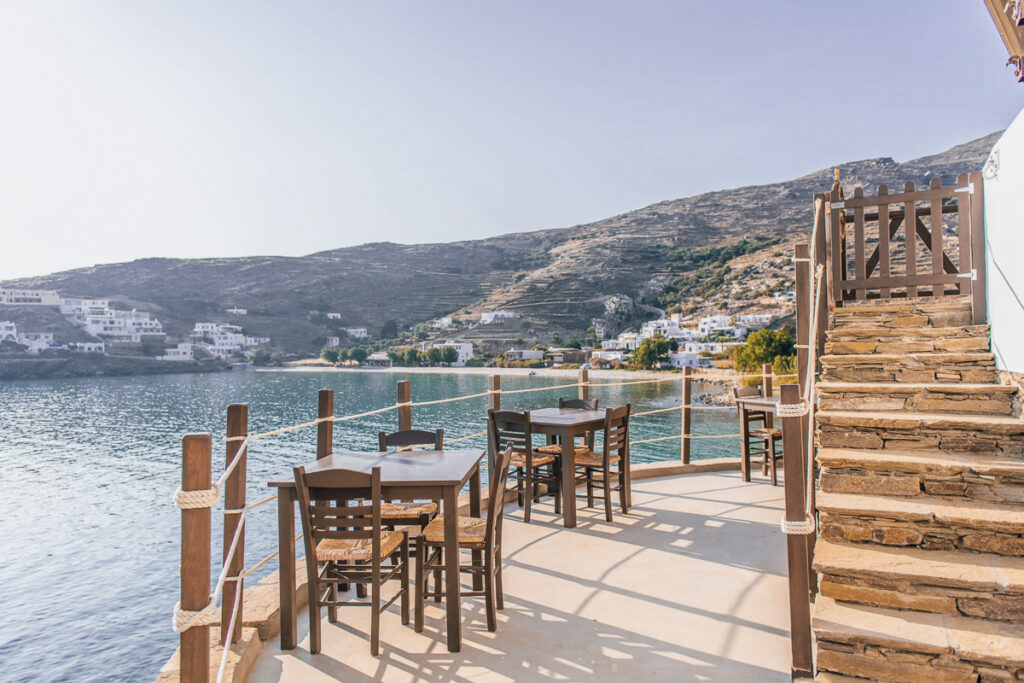
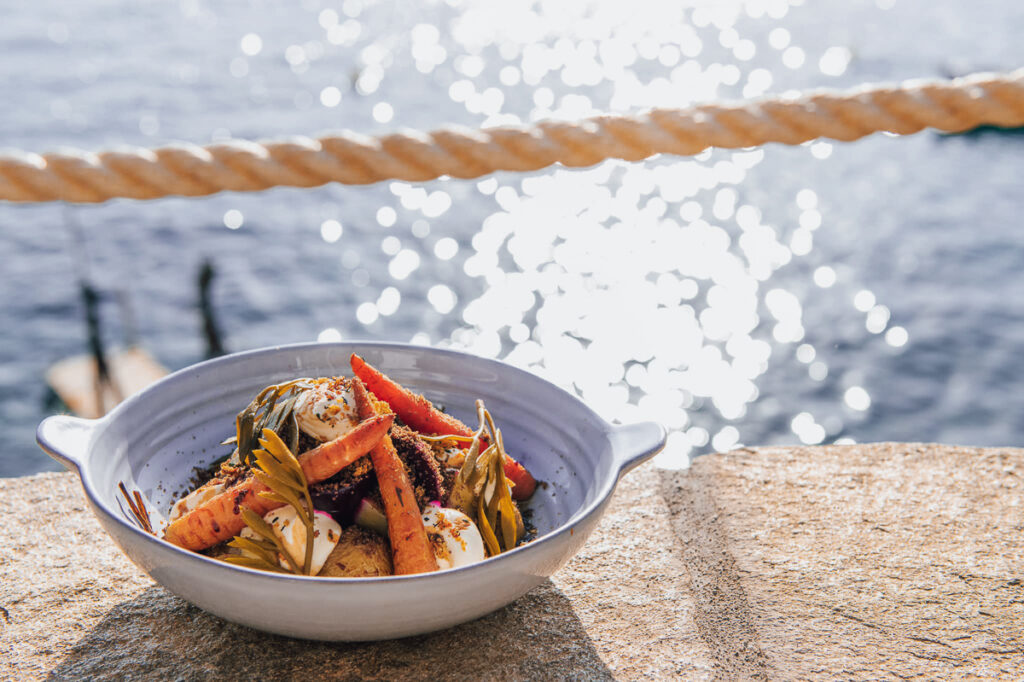
Scenic strolls and seafood at Kardiani
Kardiani may be one of the prettiest villages on Tinos and it is without a doubt the greenest. Narrow alleyways, whitewashed steps, old marble homes and bright flowers characterise the village, which has its own stream of cool water that runs through the village and gushes out of the surrounding springs. O Ntinos is a short drive from the centre of Kardiani village down to the coast and is synonymous with fresh seafood. At O Ntinos, you’ll see tables of people enjoying the garidomakaronada (prawn spaghetti) that has a complex-tasting broth and spaghetti cooked to al dente perfection (which can often be a rarity in Greece). The menu also includes signature Tinian salads, and interesting takes on Greek seafood classics, like the octopus stifado served on carrot puree. Enjoy the food and the uninterrupted sea view with a chilled glass of rose as the sun slowly sets.
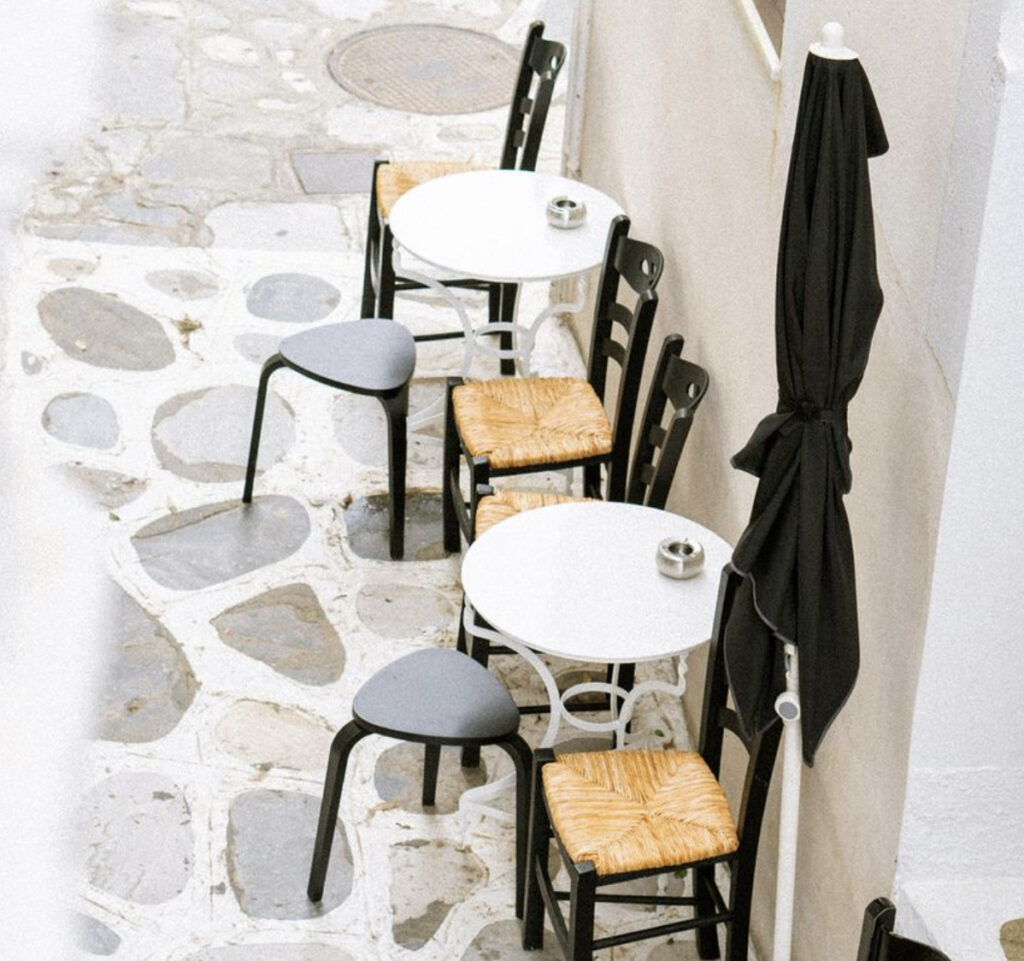
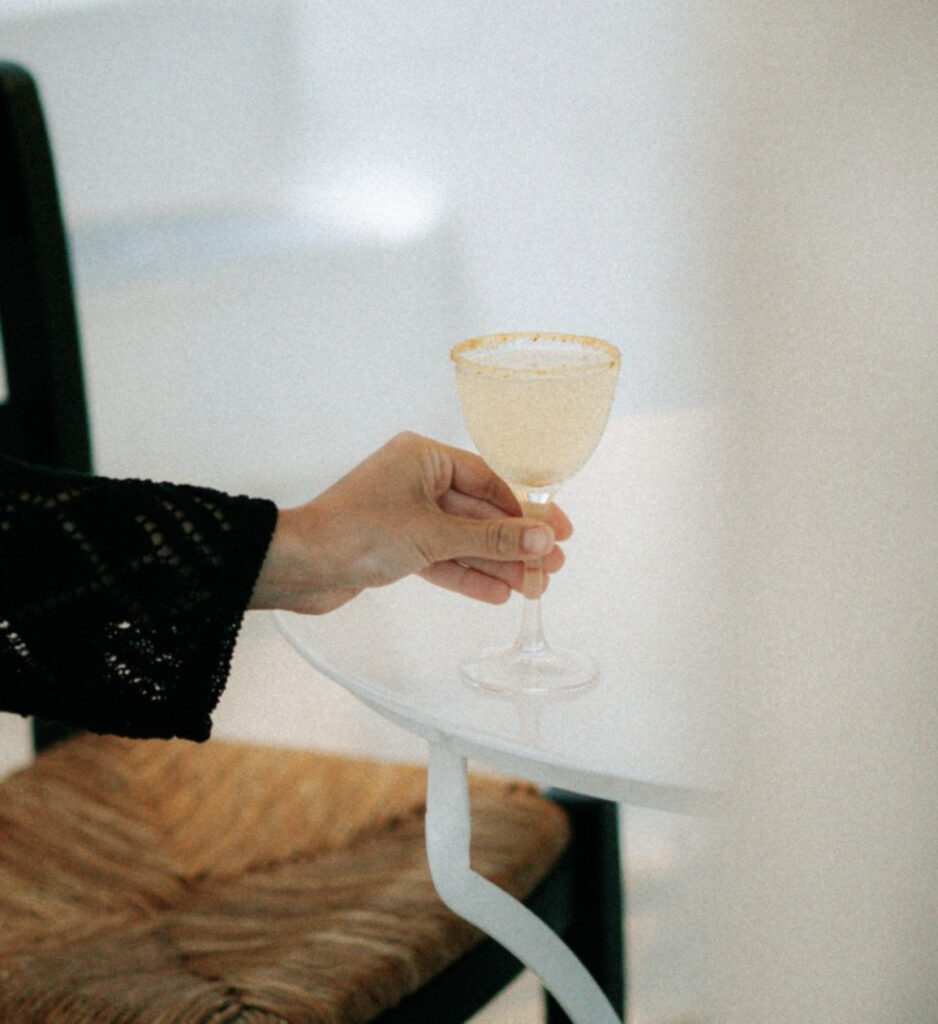
Starting your day the right way at Chora
Like most Greek islands, Chora (the main town) plays an important role in daily life. Chora is located close to the port and is a convenient place to base yourself, with most accommodation options and Tinos’ nightlife a short walk away. Tinos’ Chora is home to Panagia Evangelistria, the major Marian shrine in Greece and pilgrimage site, with thousands of pilgrims covering the distance from the port to the shrine on their hands and knees throughout the year. Chora offers some especially enticing ways to start your day in Tinos. If good coffee is important to you, make your first coffee stop of the day at Prickly Bear, a small cafe serving up Area 51 coffee (a specialty brand from Athens) that is best enjoyed on the low stools set in the sunny alleyway and served up by smiling baristas who take their coffee seriously. Sol Bake and Coffee Project is a hole-in-the-wall take-away spot, filled with plants and skating paraphernalia that serves up coffee and vegan treats. Finally, no trip to Tinos town would be complete without a stop at Halaris sweets. Open since 192, this small, sweet-smelling zacharoplasteio bakes daily traditional sweet treasures like cakes, biscuits, halva cake, tsoureki and sweet gifts to bring back home.
You can read our ultimate guide to Tinos here.

